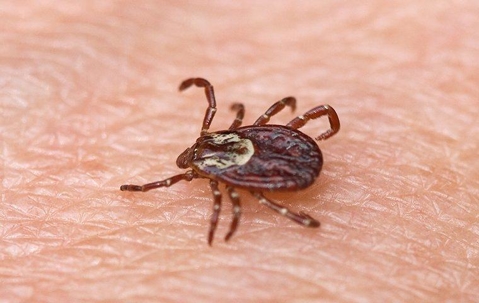If you’re someone who loves the great outdoors, you’re probably aware that ticks can be a problem. However, sometimes New Haven property owners, and those who don’t go outside as much, forget about these pests and the risks they pose.
Ticks are disgusting pests because they are parasites that need a host to survive. While some tick species prefer animal hosts, most in the area will also attach to a human host if one comes along. Ticks will wait (often in brush or long grass) for a host and then cut into the skin. They insert a “feeding tube” that allows them to suck the blood of the host for their meal.
While there are many species of ticks, there are a few that are more common in our area. This brief guide to ticks can help you know how to identify them and the way that they find hosts.
- Deer ticks: Often known as black-legged ticks, this species is an orangish-brown color with dark brown to black legs. They hide in grass and shrubs and wait for a host to pass by, and they are one of the most common carriers of Lyme disease.
- Dog ticks: This species prefers dogs for hosts, and they tend to hang around grassy areas where dogs and dog owners are likely to be around. They have a hard exterior and are a brown color with white or grey markings.
- Lone star ticks: While rare in Connecticut, lone star ticks can be found here occasionally. They are a light brown color and the females of the species have a lone white dot that can look like a star on their backs.
What Should You Know About Tick Bites?
Luckily, not every tick bite will lead to disease, and the majority of tick bites won’t cause any real problems. However, in some cases, tick bites can cause serious illnesses such as Rocky Mountain spotted fever, Colorado tick fever, or Lyme disease.
The appearance of a tick bite can vary a lot depending on the species that left the bite and if a disease is being spread. If you see a tick still attached, that’s the best way to know if you’ve been bitten by a tick, otherwise, some tick bites just look like the bites from other insects. One sign to watch out for, however, is a bite that causes a rash in a bulls-eye pattern to develop as this is a telltale sign of Lyme disease. There are other symptoms you should look out for as these are signs of serious tick-borne illnesses:
Joint and muscle pain
Headaches
Joint stiffness
Exhaustion
Fevers
If you have any of these symptoms, get help from medical professionals immediately.
How To Lower Tick Populations Around Your Property
Keeping ticks out of your New Haven yard isn’t always possible, but you can take steps to lower tick populations by making your property less appealing to them. Part of tick prevention involves taking steps to deter wild animals that could carry ticks from getting into your yard. Tick prevention tips include:
- Working with a vet to protect your pets
- Putting up fences to keep out wild animals
- Keeping garbage cans sealed with tight-fitting lids to deter raccoons and other wildlife
- Trimming bushes, shrubs, and trees on your property
- Mowing your lawn often
How To Get Help With Tick Prevention
Because ticks can transmit many diseases to humans, knowing how to prevent them and keep yourself, your family, and your pets safe is essential. If you’re looking for tick prevention assistance, give the experts at Connecticut Pest Elimination, LLC. a call today. We are happy to help. Our technicians have over 25 years of experience so you can trust us to get the job done right. Contact us today to request your free quote.

